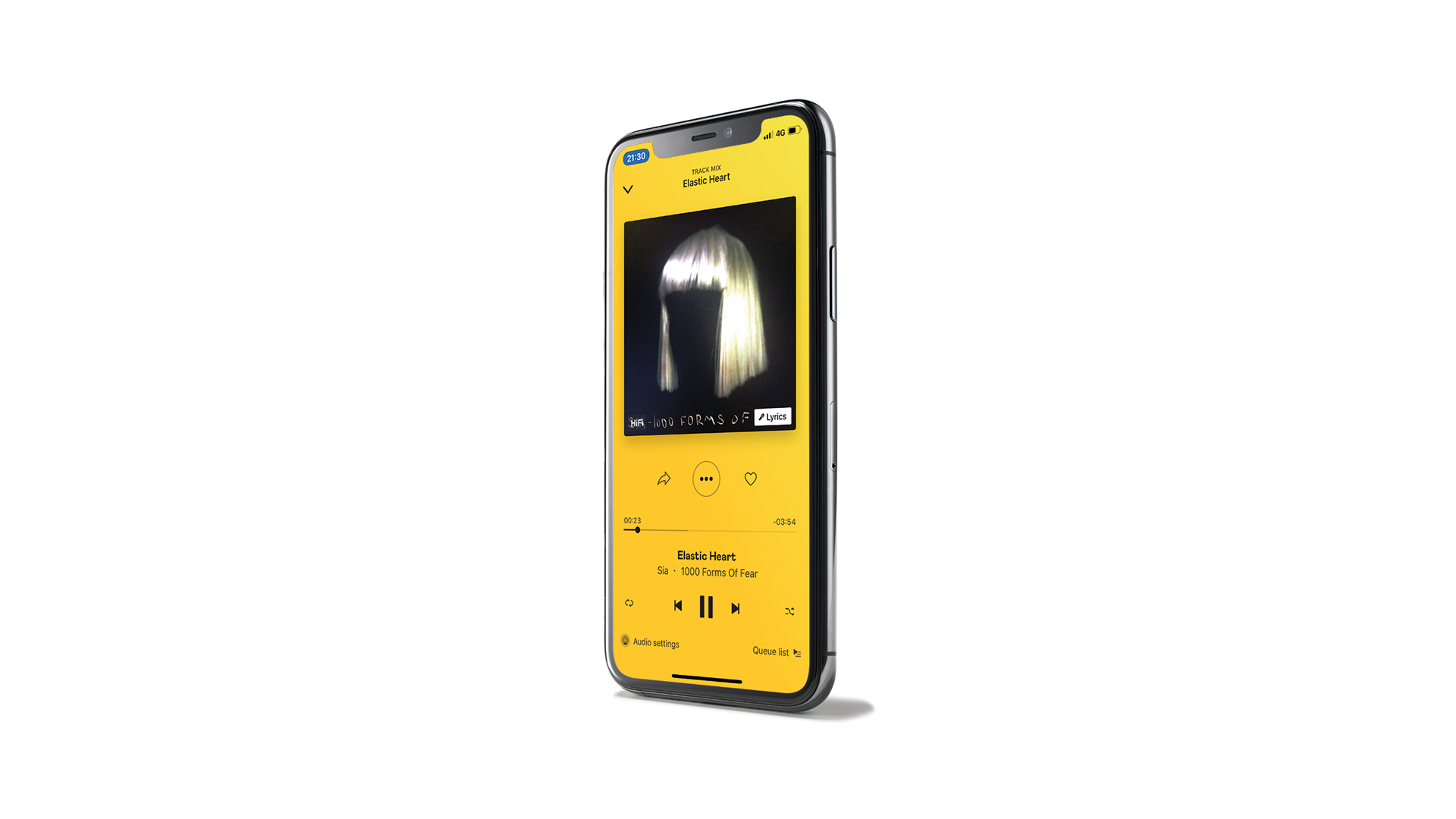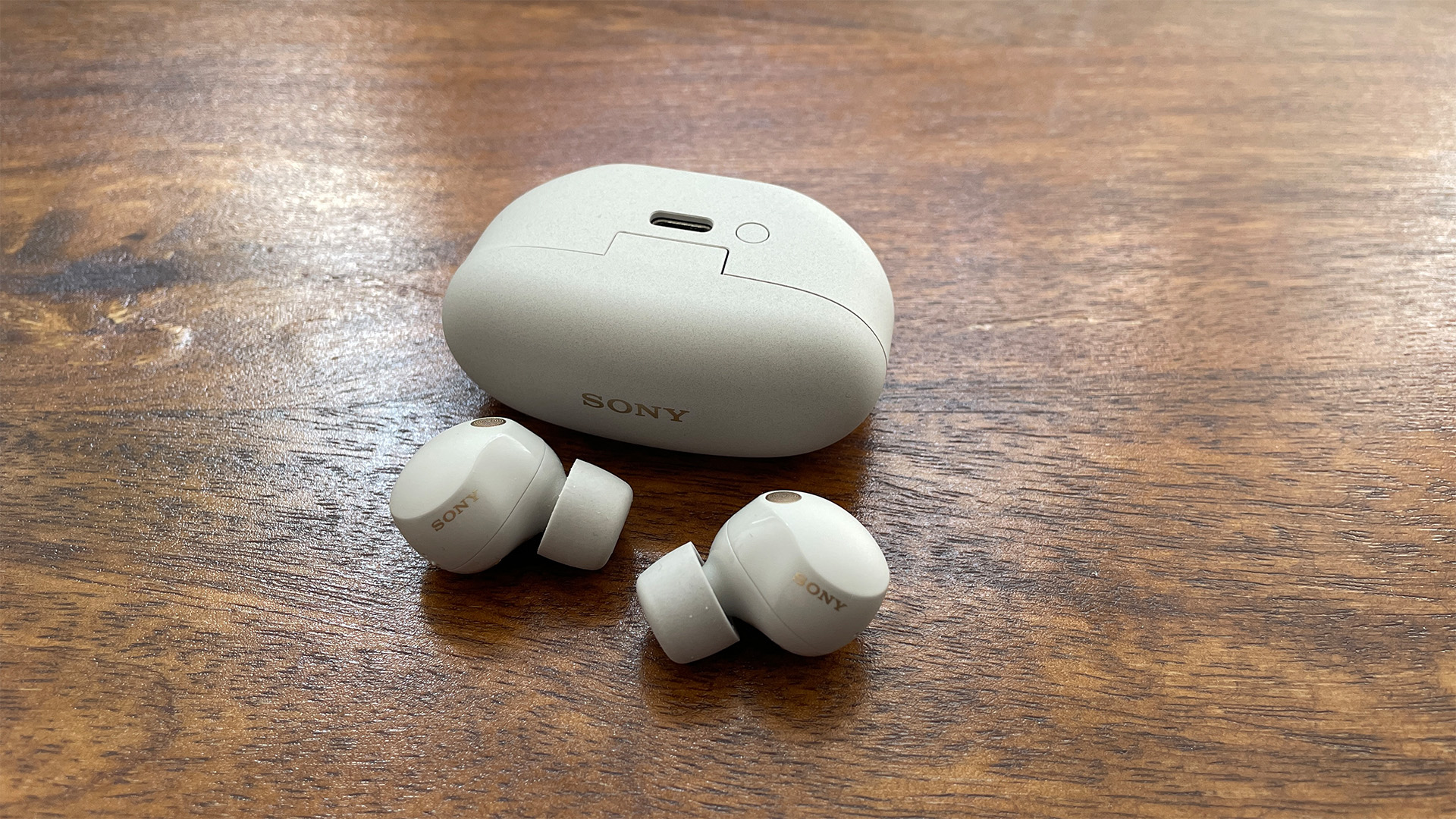What Hi-Fi? Verdict
Its ambition is to be applauded, but Deezer falls between the two stools of Spotify and Tidal and struggles to justify itself over either
Pros
- +
Vast catalogue and device support
- +
CD-quality HiFi tier
- +
Envelope-pushing 3D audio
Cons
- -
No hi-res streaming
- -
Spotify does discovery better
- -
Tidal does hi-fi better
Why you can trust What Hi-Fi?
Deezer appears to be stuck with a bit of an identity crisis. To clarify this statement, a quick history lesson: when we first reviewed the music streaming service in 2015, it clearly saw itself as a Spotify rival, bringing a vast library of music to a mainstream audience as efficiently as possible.
By the time of our re-review, in early 2018, Deezer had begun courting the hi-fi crowd with a comprehensive catalogue of CD-quality tracks and murmurings of hi-res MQA support to come. Then, with hi-res still yet to appear on the platform in 2020, Deezer partnered with Sony and started offering 360 Reality Audio streaming to subscribers to its HiFi tier.
Now here we are in 2022 and 16-bit/44.1kHz FLAC files (ie. CD quality) is still the pinnacle of Deezer's HiFi offering. It is a step up from the 128kbps MP3 files of "standard streaming services", but those are now few and far between. As Apple (with Apple Music Lossless) Tidal and Qobuz become ever-more embroiled in a hi-res music war and Amazon Music quietly drops its premium tier to £7.99 to keep hold of its valued Prime Members, where does that leave Deezer?
Clearly, the French streaming service is trying its best to find a USP, and that's to be applauded, but the result is that it falls short of matching Spotify's mainstream appeal (despite the fact that Spotify's HiFi tier is still nowhere to be seen) and Tidal's hi-fi credentials.
Features
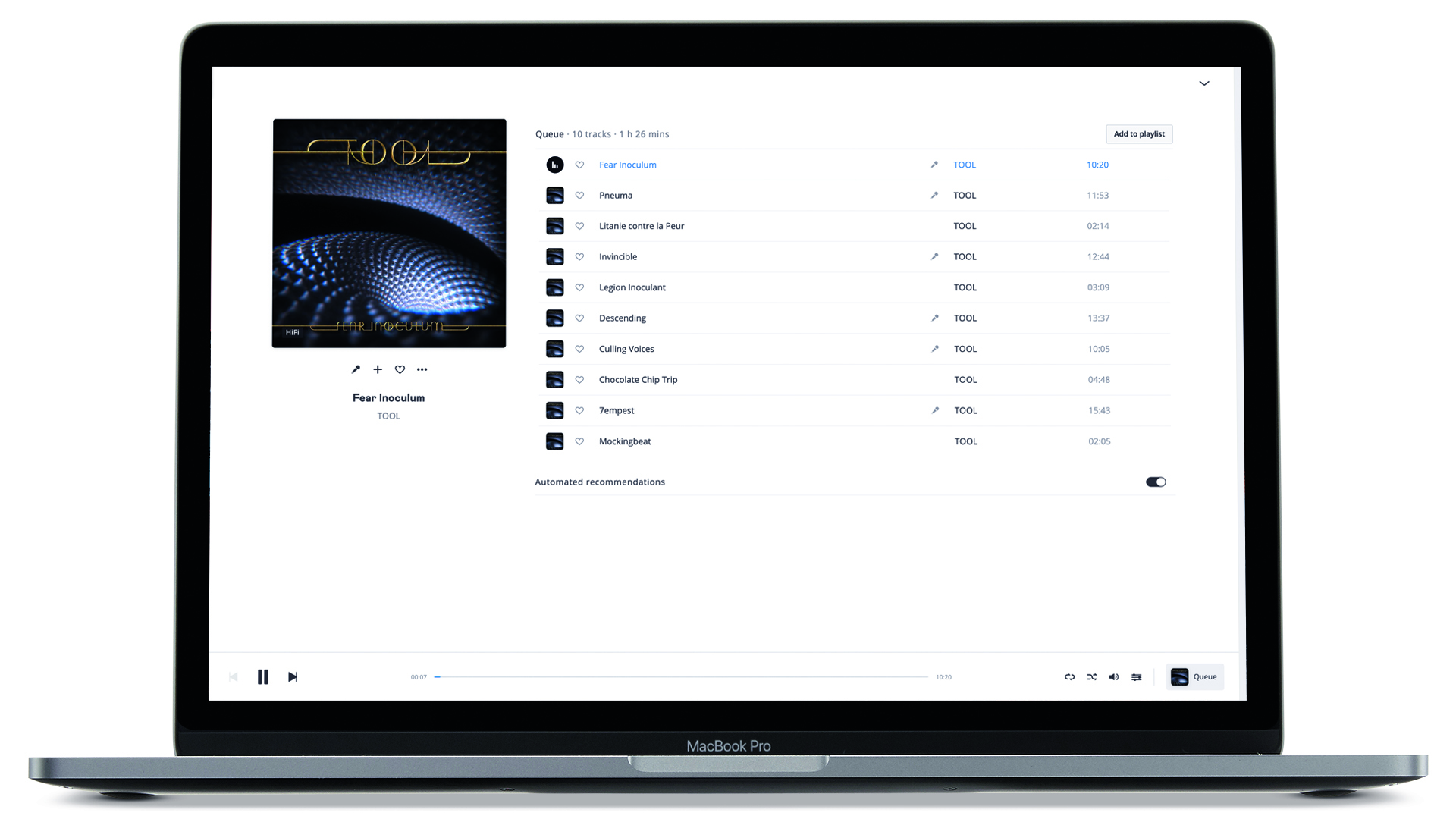
Deezer has offered CD quality tracks in the 16-bit/44.1kHz FLAC format since 2017 and now, it has more than 90 million of them – ie 100 per cent of its catalogue. The streaming platform originally launched its service in 2007 with 4 million tracks in standard quality, and until recently offered 73 million songs.
The company claims it is "constantly improving its audio streaming service" and recently added Tune My Music, a library importer which helps users transfer their favourite songs and playlists to Deezer from other services.
These tracks are available to those who subscribe to the £14.99 ($14.99, AU$17.99) per-month HiFi tier – which used to cost £19.99 until a little while ago – and although you initially needed to own one of a handful of specific devices in addition to enjoy it, they can now be heard on almost any device that supports the core Deezer experience.
The latest hi-fi, home cinema and tech news, reviews, buying advice and deals, direct to your inbox.
In fact, Deezer now comes pre-loaded in devices such as Mobee-K's smart USB-C headphones while Apple's own HomePod and HomePod Mini support Deezer voice control, and Deezer tracks can be downloaded to enjoy offline on your Apple Watch, too.
It once looked likely that Deezer would add hi-res streaming to its repertoire, but the company has since decided to go down the 360 Reality Audio route, a sort of Dolby Atmos rival, but specifically for streamed music.
Deezer was the first music streaming service to offer 360 Reality Audio, but it has since been joined by Tidal, Amazon Music HD and nugs.net (a streaming service dedicated to live concerts). Back to Deezer, the tracks available in the format are included as part of its HiFi subscription. You will need to download the 360 by Deezer app if you want to listen to them all, but this gives access to all of the non-360 tracks of the standard app, so you don't have to constantly switch between the two.
The music streaming service now offers HiFi subscribers a series of '360 Sessions' – live performances reformatted in Sony 360 Reality Audio. Using Sony's object-based spatial audio technology, the 28 track playlist aims to provide a "unique immersive experience in which all audio elements – including vocals, individual instruments and audience – can be heard as if they are in different positions inside a 360 spherical space".
The tracks include live performances from a slew of global stars and rising talents ranging from Dua Lipa and Anne-Marie, to Circa Waves, Lolo Zouai, Barrie, Fireboy Dml, Joesef, Half Moon Run and Georgia.
Anyone with a subscription to Deezer HiFi can enjoy the 360 Sessions now. No special hardware is needed, provided you have download the standalone 360 by Deezer app. Premium users can enjoy the playlist, but only in stereo.
The bad news is that 360 by Deezer is only available on iOS and Android devices – although HiFi subscribers can now cast 360 Reality Audio tracks to some wireless speakers. There are eight playlists, including 'New on 360 by Deezer' that can be enjoyed on a computer or hi-fi via the desktop app as teasers – but not the full package.
Pricing
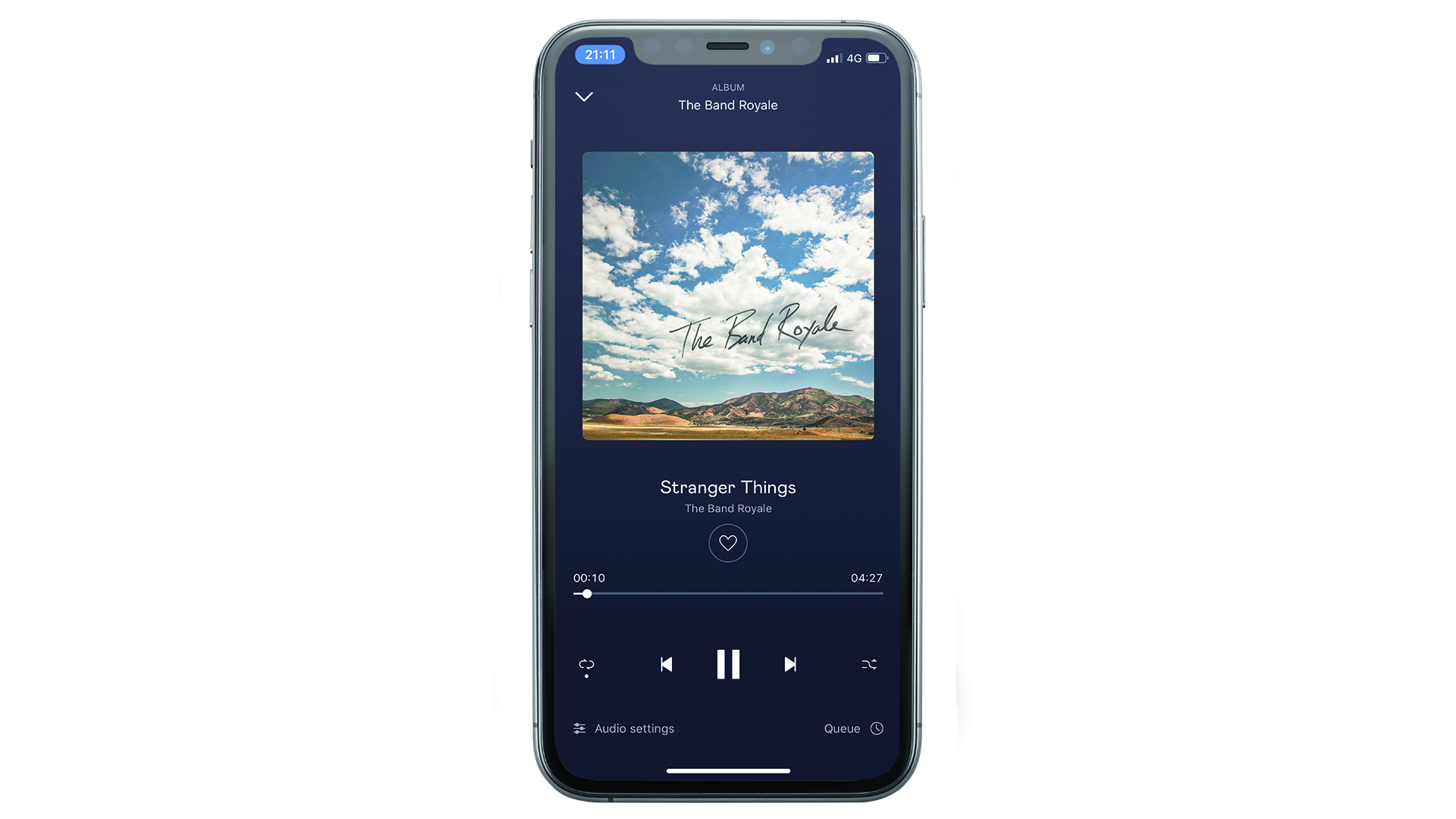
Below Deezer HiFi there are three tiers. Premium (£9.99, $9.99, AU$11.99 per month) shares features with HiFi – no ads, unlimited streaming and control on mobile apps, and offline access – but limits sound quality to 320kbps.
Deezer Family (£14.99, $14.99, AU$17.99 per month) gets you everything on Premium for up to six profiles. There’s also a free, ad-supported tier with 128kbps streaming and limited mobile app use.
Compatibility
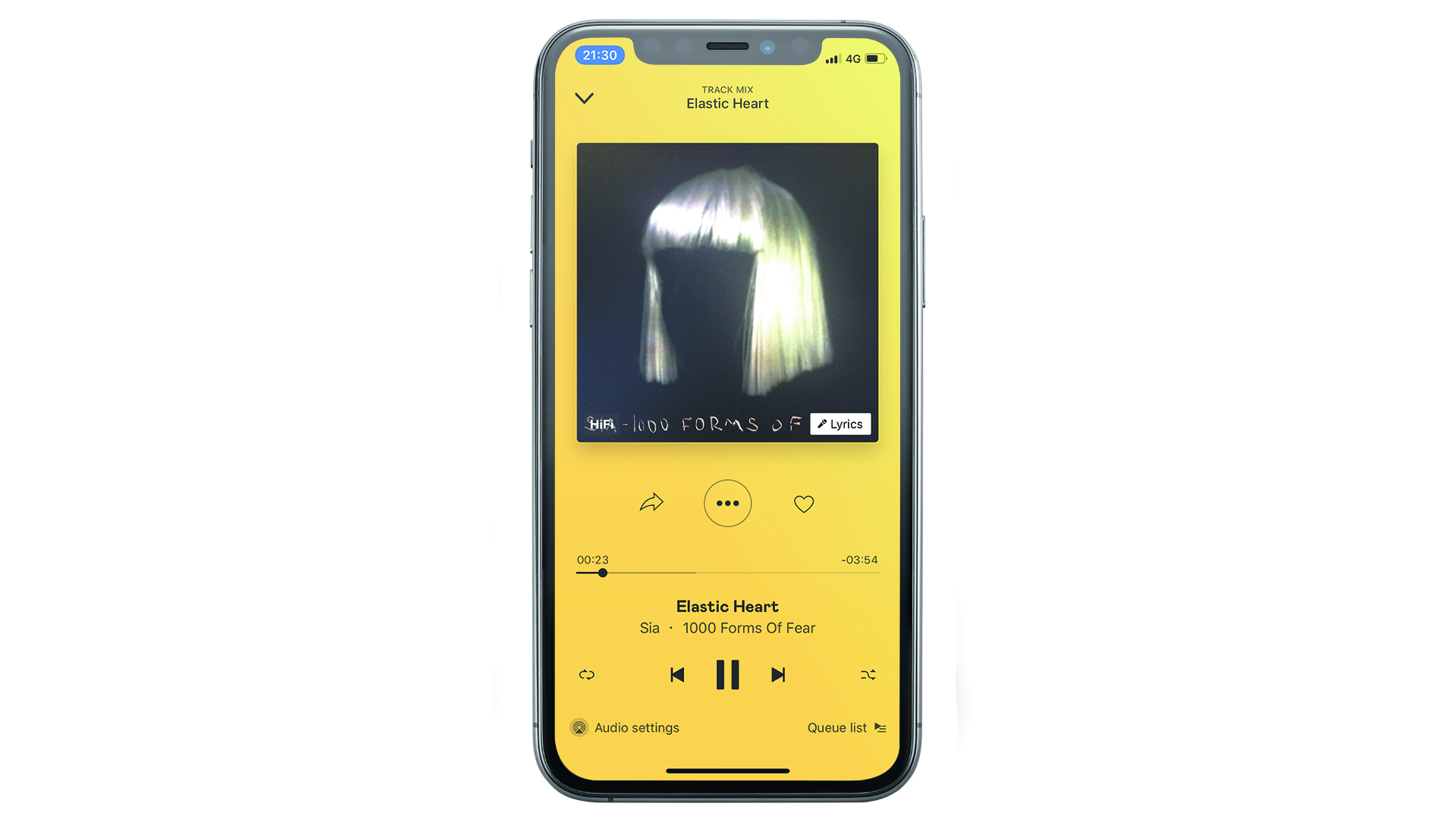
As well as smartphones and computers, the Deezer app is also available on many other devices: TVs from the likes of Samsung, Sony and LG; wireless speakers by Sonos, Amazon, Bluesound and Bose; and even cars via Android Auto or Apple CarPlay. And that's far from an exhaustive list.
What's more, Chromecast and AirPlay allow you to send tunes to yet more devices. Deezer might not quite match Spotify's ubiquity (it's missing from Cambridge Audio's streamers, for example), but it's close.
Regardless of the device used, subscribers can access a catalogue of over 90 million songs, which Deezer now assures us are all available in the CD-quality FLAC format. It's an impressive figure, but with all music streaming services making similarly huge claims, the numbers game is rendered a little academic.
What matters is whether the tracks you're looking for are available and, in our experience, Deezer produces the fewest blanks after Spotify. It's rare to find a song in Spotify's catalogue that isn't also available in Deezer's – and in that higher-quality format.
We find Deezer stocks pretty much every track of the diverse range we search for, and all in CD quality too. Just be aware that, unlike Apple Music and Tidal, Deezer doesn’t have artist or album window ‘exclusives’, although it does occasionally release its own live sessions with big artists.
Ease of use
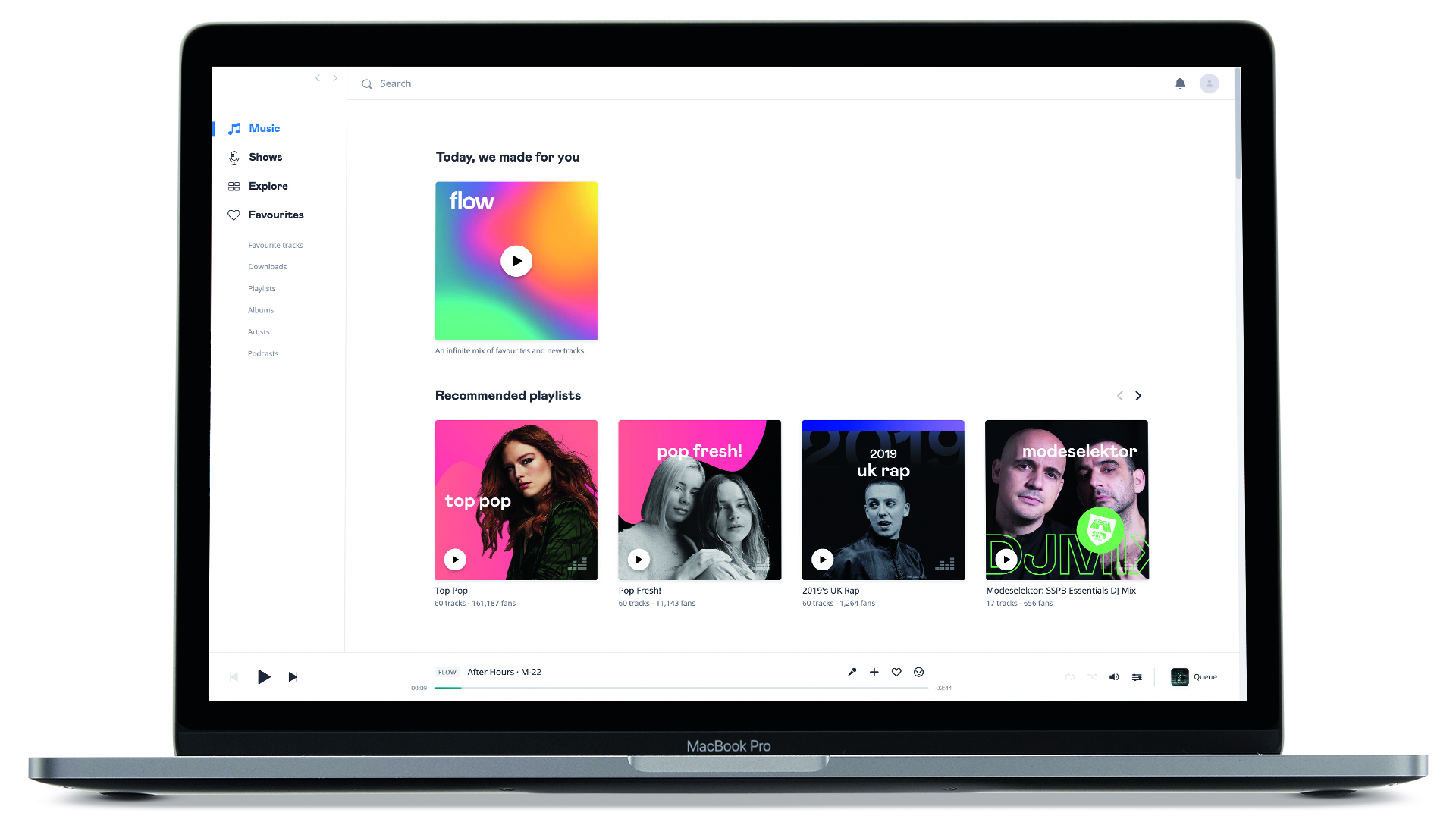
As HiFi subscribers, we mostly use the desktop and iOS mobile apps, and the ability to flick from one to the other is made easy by the fact each platform offers a similar interface.
Deezer’s appearance is perhaps best described as stripped-back – almost brutally so. The interface is clean and clear, but also a bit bare, particularly on desktop. Music streaming services are generally similar in layout, with a bottom playback bar and a few left-hand side tabs bordering the centralised chunk of content – and Deezer doesn’t stray too far from this template.
Since our last review update, things have been slightly tweaked. 'Home' has been replaced by 'Music', although it does the same job as before: presenting users with personalised playlists as well as the opportunity to browse music by charts, new releases, popularity and various moods. Radio stations still appear at the bottom of this page, but podcasts now have their own tab.
'Favorites' has replaced ‘My music’, but again, the purpose is unchanged: it's a gateway to your saved playlists and ‘favourite’ tracks, albums and podcasts.
Performance
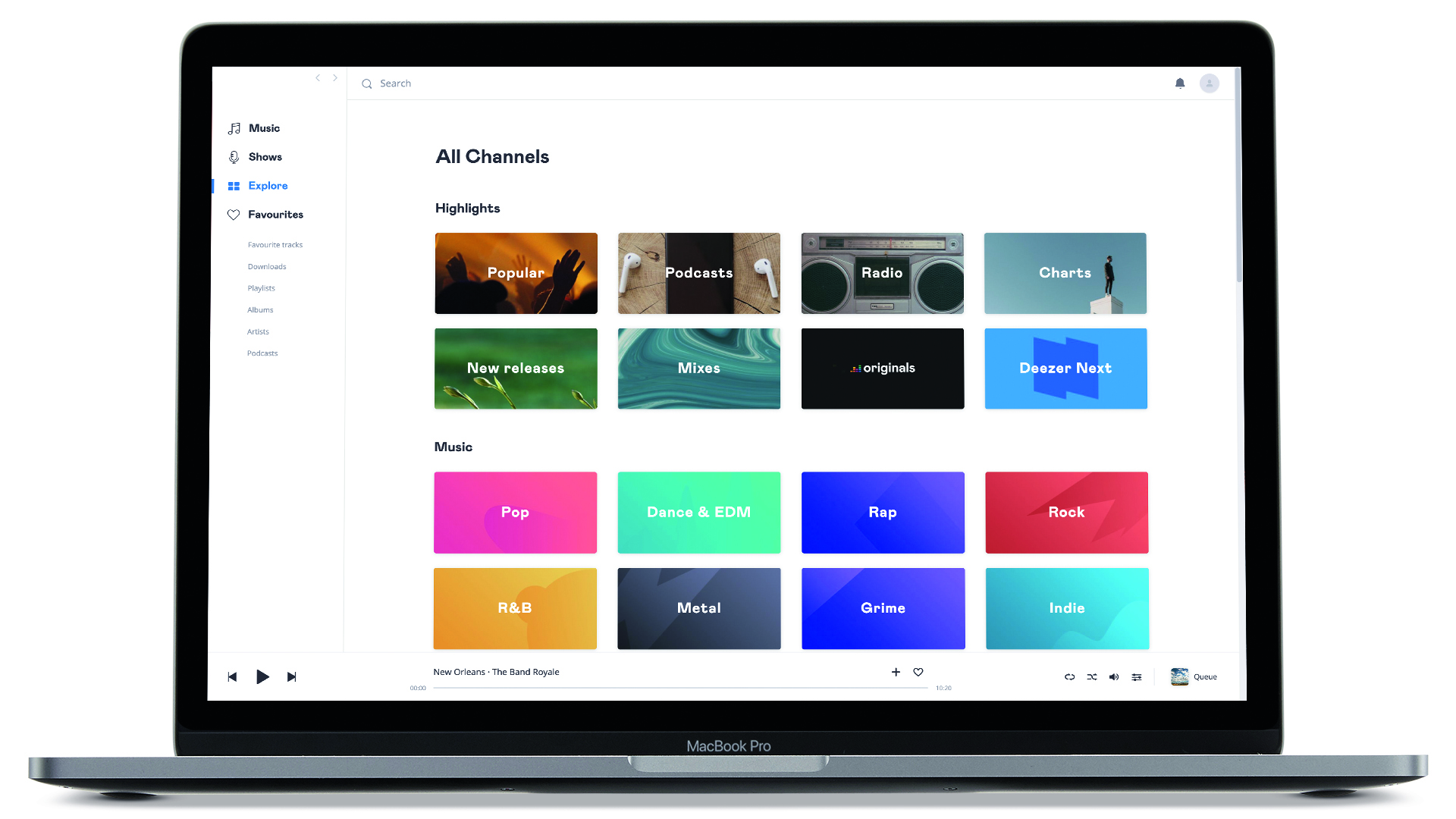
We are pleased to report that Deezer HiFi (CD-quality) streams are clear, full-bodied and, perhaps most importantly, an upgrade from the ‘Better’ (320kbps) quality streams. It’s worth noting sound quality can be changed between ‘Standard’ (128kbps), 'Better' (320kbps on wi-fi and 128kbps on mobile data), and ‘High Fidelity’ (1411kbps).
For example, the HiFi streams cling more committedly to the textures of the ‘80s-style keys, percussion and synths underpinning Chaka Khan's Pallion (aka Hot Butterfly), and those of the affected backing track and vocals in Dua Lipa's Levitating.
However, we find Tidal’s CD-quality streams a little crisper, cleaner and more precise. There’s more fuel driving Tiny Giant’s Draw Me A Line, and greater space around the instrumental and vocal accompaniment. Timing of the drumbeats and underlying cymbal rhythm is noticeably more accurate, too, with Tidal’s version of Donald Fagen’s I.G.Y. springing into life with a touch more bite.
That said, listening through Grado SR325e headphones plugged into a MacBook Air, the differences are subtle. And it’s only when we up the transparency of our set-up with a Chord Hugo 2 DAC that these discrepancies become significant, helped by Tidal's fancy options for taking exclusive control of the DAC and bypassing the MacBook's audio processing and volume control. Deezer has no such options.
Of course, the ace up Deezer's sleeve is 360 Reality Audio. 360 Reality Audio offers a 3D sound space by creating multiple virtual speakers and can be listened to via most standard headphones – although the experience has been optimised for Sony's range.
At its best, it's really rather impressive, immersing you in the music and surrounding you with spatially distinct instruments in a way not previously experienced. As a technological showcase, it's effective and gives you fresh insight into some of your favourite tracks (although the selection is fairly limited at this point).
But whether the 360 version of a track will replace the stereo version in your affections is debatable. For one, even the best tracks sound comparatively lacking in punch and weight when compared to their stereo equivalents, and some other tracks just don't seem to have made the transition to 3D particularly well, coming across as rather flat and compressed in terms of detail and dynamics.
It's worth remembering that 360 Reality Audio is still a relative newbie in hi-fi and there's already so much to like. In time, it could be absolutely brilliant – it's just not a hugely persuasive reason to opt for Deezer over Tidal right now.
Verdict
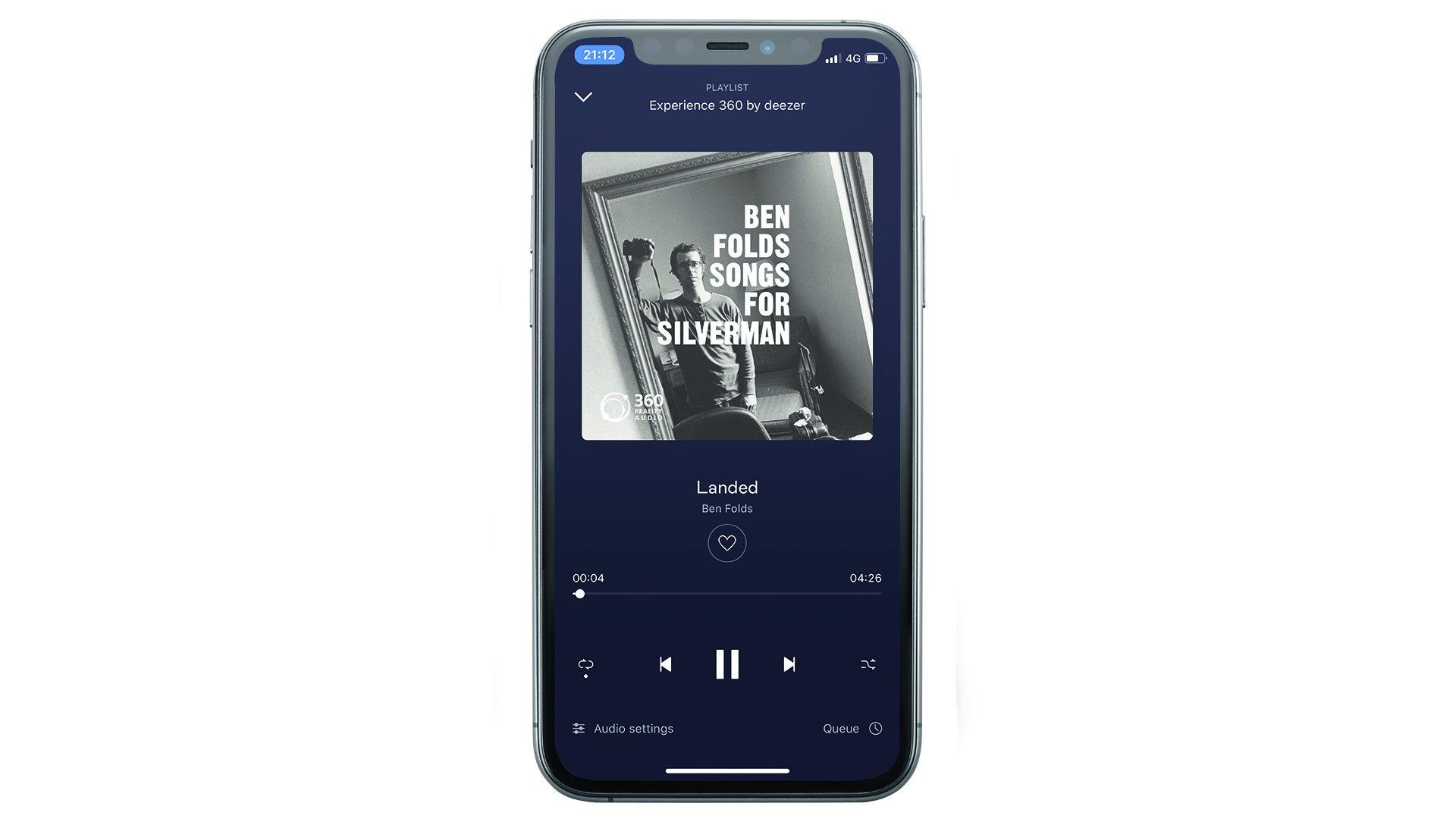
While we prefer Tidal’s comprehensive layout and slightly superior sound quality, the main chink in Deezer’s armour is its current lack of hi-res audio.
After all, subscribers to Tidal’s HiFi tier get access to over a million (typically 24-bit/96kHz) hi-res Masters in addition to CD-quality streaming – although they have to pay a little more for it at £19.99 ($19.99) per month. Amazon Music HD delivers hi-res tracks for £7.99 ($7.99) per month for Prime members and £9.99 ($9.99) per month without an Amazon Prime account.
Deezer may still have hi-res in its sights, but all has gone quiet on that front since the announcement of its partnership with MQA back in September 2017. And until it comes as part of a competitive package, it doesn’t shine brightly enough to be the leading light in music streaming.
Its core, non-HiFi subscription, meanwhile, falls just a whisker short of Spotify when it comes to ubiquity, discovery and presentation.
But, while Deezer falls between the two pillars of Tidal and Spotify right now, the addition of hi-res streams (and some of the hi-fi-focused features of Tidal) could one day see it become the best of both worlds.
SCORES
- Performance 4
- Features 4
- Ease of use 4
MORE:
See the best music streaming services 2022: free streams to hi-res audio
Read our Tidal review
Check out the best music streamers 2022: upgrade to a wireless system
What Hi-Fi?, founded in 1976, is the world's leading independent guide to buying and owning hi-fi and home entertainment products. Our comprehensive tests help you buy the very best for your money, with our advice sections giving you step-by-step information on how to get even more from your music and movies. Everything is tested by our dedicated team of in-house reviewers in our custom-built test rooms in London, Reading and Bath. Our coveted five-star rating and Awards are recognised all over the world as the ultimate seal of approval, so you can buy with absolute confidence.
